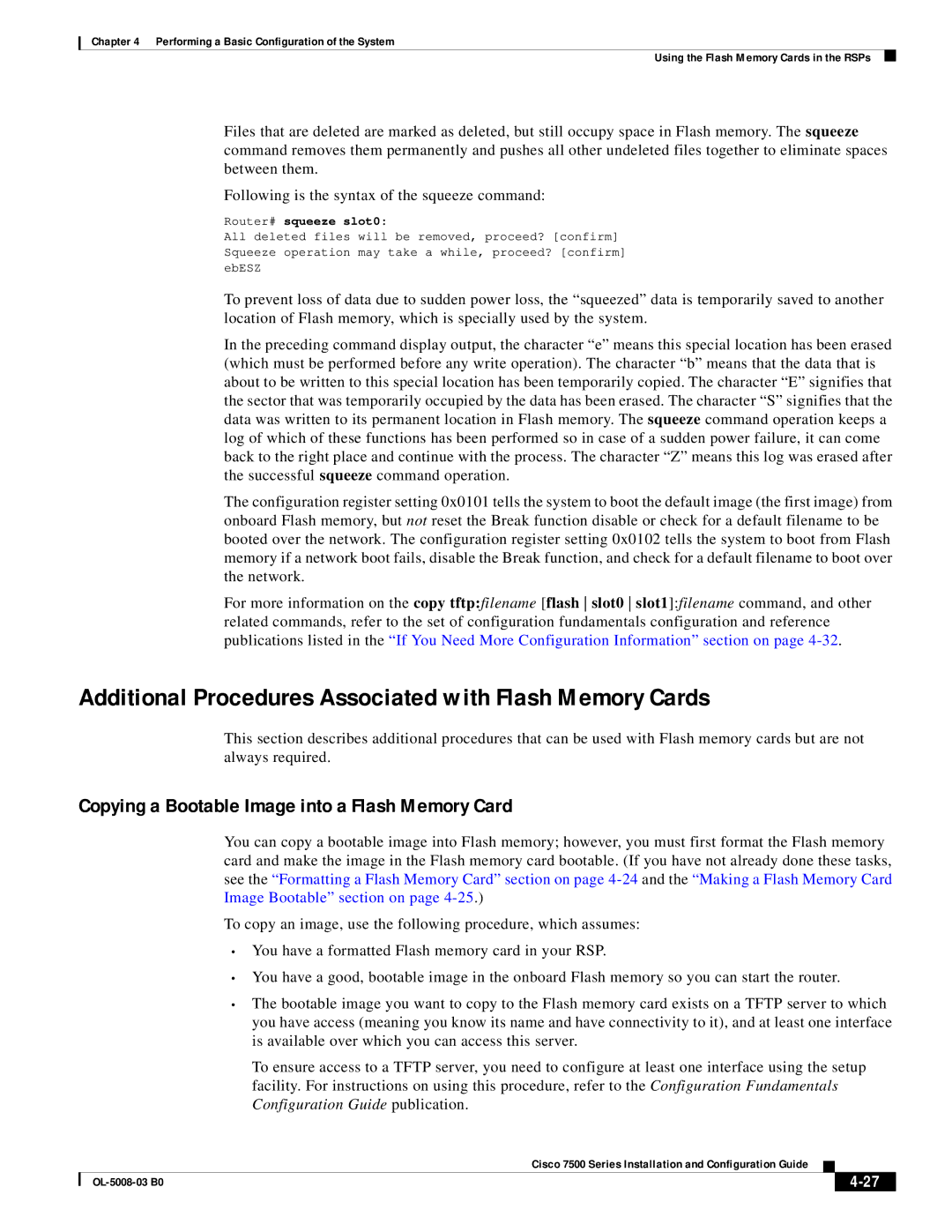Chapter 4 Performing a Basic Configuration of the System
Using the Flash Memory Cards in the RSPs
Files that are deleted are marked as deleted, but still occupy space in Flash memory. The squeeze command removes them permanently and pushes all other undeleted files together to eliminate spaces between them.
Following is the syntax of the squeeze command:
Router# squeeze slot0:
All deleted files will be removed, proceed? [confirm]
Squeeze operation may take a while, proceed? [confirm]
ebESZ
To prevent loss of data due to sudden power loss, the “squeezed” data is temporarily saved to another location of Flash memory, which is specially used by the system.
In the preceding command display output, the character “e” means this special location has been erased (which must be performed before any write operation). The character “b” means that the data that is about to be written to this special location has been temporarily copied. The character “E” signifies that the sector that was temporarily occupied by the data has been erased. The character “S” signifies that the data was written to its permanent location in Flash memory. The squeeze command operation keeps a log of which of these functions has been performed so in case of a sudden power failure, it can come back to the right place and continue with the process. The character “Z” means this log was erased after the successful squeeze command operation.
The configuration register setting 0x0101 tells the system to boot the default image (the first image) from onboard Flash memory, but not reset the Break function disable or check for a default filename to be booted over the network. The configuration register setting 0x0102 tells the system to boot from Flash memory if a network boot fails, disable the Break function, and check for a default filename to boot over the network.
For more information on the copy tftp:filename [flash slot0 slot1]:filename command, and other related commands, refer to the set of configuration fundamentals configuration and reference publications listed in the “If You Need More Configuration Information” section on page
Additional Procedures Associated with Flash Memory Cards
This section describes additional procedures that can be used with Flash memory cards but are not always required.
Copying a Bootable Image into a Flash Memory Card
You can copy a bootable image into Flash memory; however, you must first format the Flash memory card and make the image in the Flash memory card bootable. (If you have not already done these tasks, see the “Formatting a Flash Memory Card” section on page
To copy an image, use the following procedure, which assumes:
•You have a formatted Flash memory card in your RSP.
•You have a good, bootable image in the onboard Flash memory so you can start the router.
•The bootable image you want to copy to the Flash memory card exists on a TFTP server to which you have access (meaning you know its name and have connectivity to it), and at least one interface is available over which you can access this server.
To ensure access to a TFTP server, you need to configure at least one interface using the setup facility. For instructions on using this procedure, refer to the Configuration Fundamentals Configuration Guide publication.
|
| Cisco 7500 Series Installation and Configuration Guide |
|
| |
|
|
| |||
|
|
|
|
| |
|
|
|
| ||
